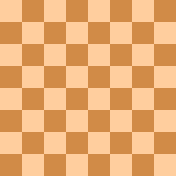James Macrae Aitken facts for kids
James Macrae Aitken (born October 27, 1908 – died December 3, 1983) was a talented Scottish chess player. He was born in Calderbank, a town in Lanarkshire, Scotland. James Aitken was not just a chess player; he also earned a PhD from Edinburgh University in 1938. His research was about the trial of a famous Scottish historian named George Buchanan.
Contents
A Chess Champion's Journey
James Aitken learned how to play chess from his father when he was just 10 years old. He quickly became very good at the game! He won the Scottish Chess Championship many times: in 1935, 1952, 1953, 1955, 1956, 1957, 1958, 1960, 1961, and 1965. In 1965, he shared the title with another player, PM Jamieson. He also became the London Champion in 1950.
In 1959, James Aitken had one of his best results in the British Chess Championship, where he tied for seventh place. He proudly represented Scotland in four big international chess tournaments called Chess Olympiads.
- At the Stockholm Olympiad in 1937, he played on the top board. Even though his overall score wasn't high, he managed to beat a strong Swedish Grandmaster, Gideon Ståhlberg, and draw with an American Grandmaster, Samuel Reshevsky.
- He played on the second board at the Munich Olympiad in 1958 and the Tel Aviv Olympiad in 1964.
- At the Skopje Olympiad in 1972, he played on the sixth board.
James Aitken also played for Great Britain in special matches against teams from the USSR and Yugoslavia. In a 1946 radio match between the United Kingdom and the USSR, he played on board 8. He also had impressive wins against Grandmasters Savielly Tartakower in 1949 and Efim Bogoljubow in 1951.
Secret Work During World War II
During World War II, James Aitken used his sharp mind for a very important secret mission. He worked at Bletchley Park in a place called Hut 6. His job was to help solve the secret codes created by the German Enigma machine. This work was super important for the war effort!
On December 2, 1944, the Bletchley Park chess team played a match against the Oxford University Chess Club. Bletchley Park won the match 8–4, with James Aitken playing on one of the top three boards alongside other famous chess players like C.H.O'D. Alexander and Harry Golombek.
Beyond the Chessboard
James Aitken was also a writer. He wrote many book reviews for the British Chess Magazine, a well-known publication for chess fans. Besides chess, he enjoyed several other hobbies. He liked playing golf, collecting stamps (philately), playing bridge (a card game), and watching cricket.
James Macrae Aitken passed away in Cheltenham in 1983 when he was 75 years old.
Aitken Variation in Chess
| This section uses algebraic notation to describe chess moves. |
James Aitken even has a chess opening variation named after him! In 1937, he suggested a new way to play in the Greco Variation of the Giuoco Piano opening. He wrote about it in the British Chess Magazine. This line is now called the Aitken Variation.
Here are the moves for the Aitken Variation: 1.e4 e5 2.Nf3 Nc6 3.Bc4 Bc5 4.c3 Nf6 5.d4 exd4 6.cxd4 Bb4+ 7.Nc3 Nxe4 8.O-O Nxc3 9.bxc3 Bxc3 10.Ba3.
| a | b | c | d | e | f | g | h | ||
| 8 |

|
8 | |||||||
| 7 | 7 | ||||||||
| 6 | 6 | ||||||||
| 5 | 5 | ||||||||
| 4 | 4 | ||||||||
| 3 | 3 | ||||||||
| 2 | 2 | ||||||||
| 1 | 1 | ||||||||
| a | b | c | d | e | f | g | h | ||

